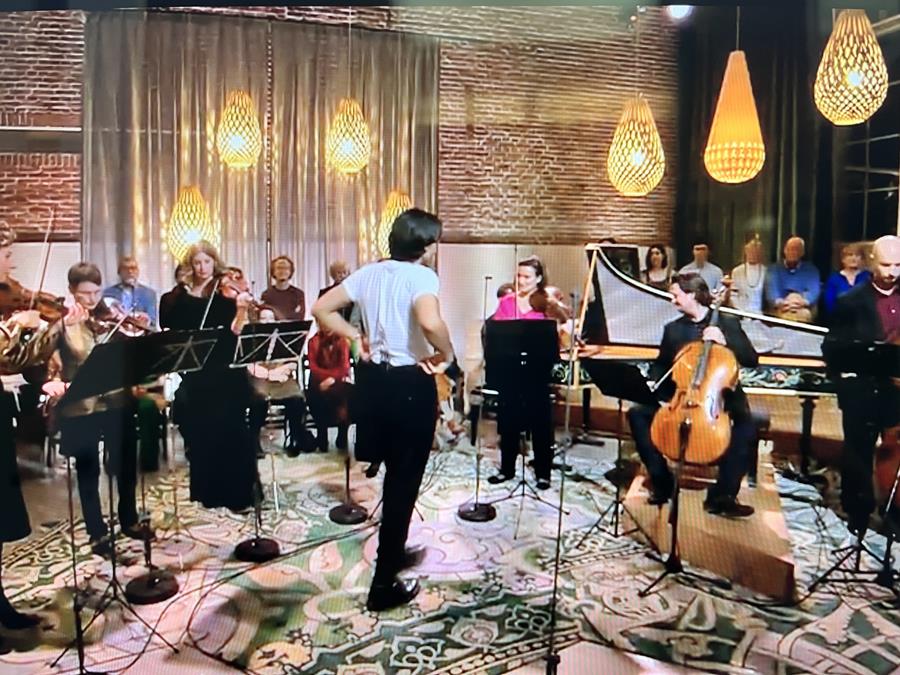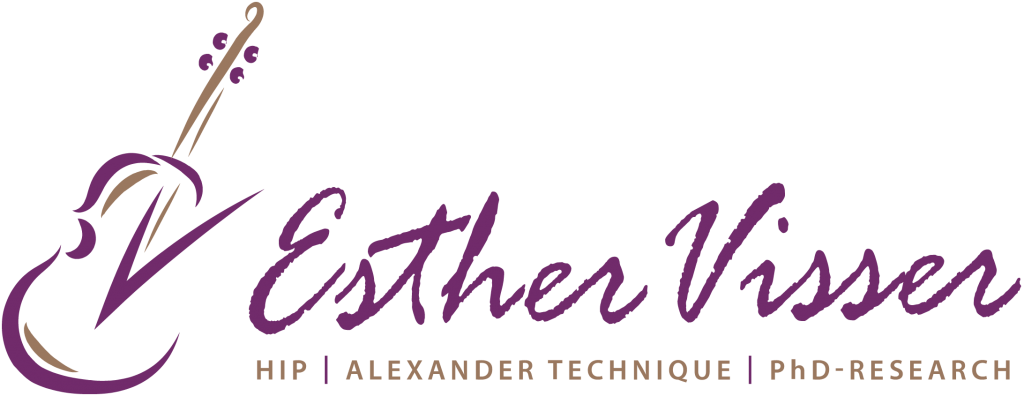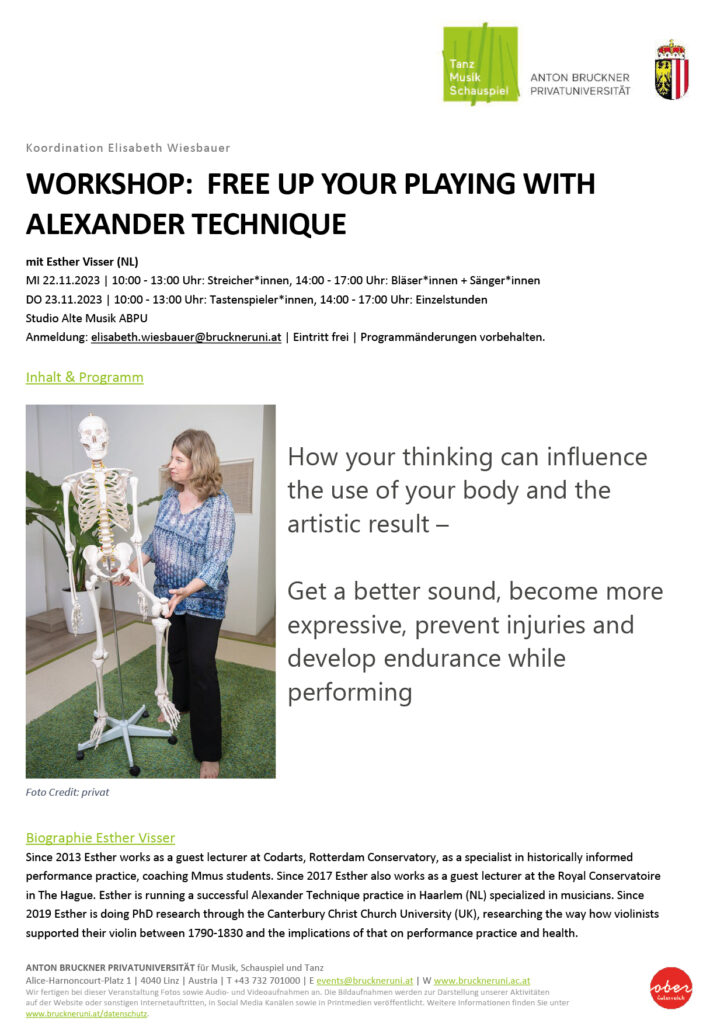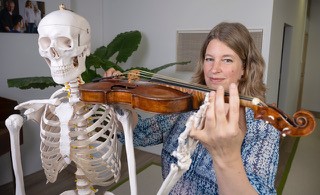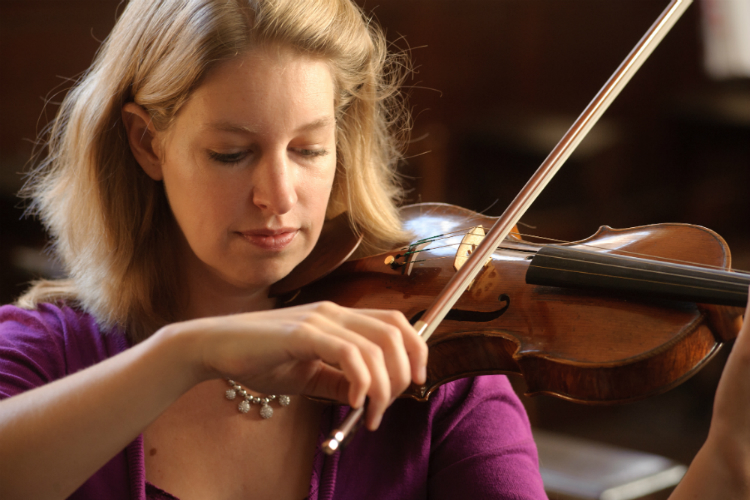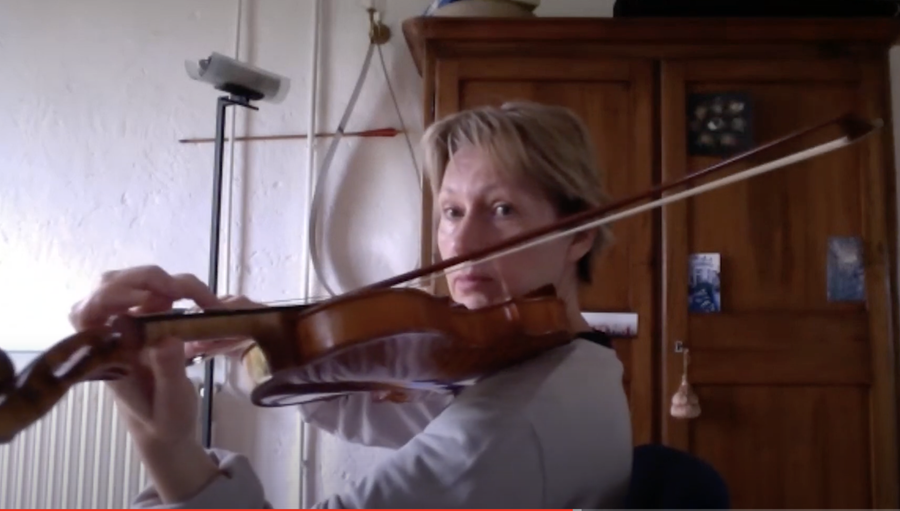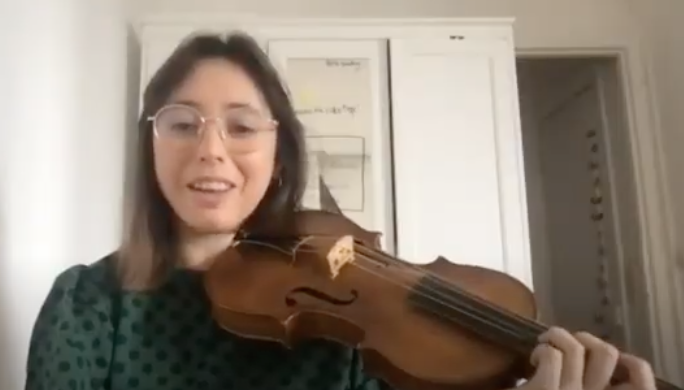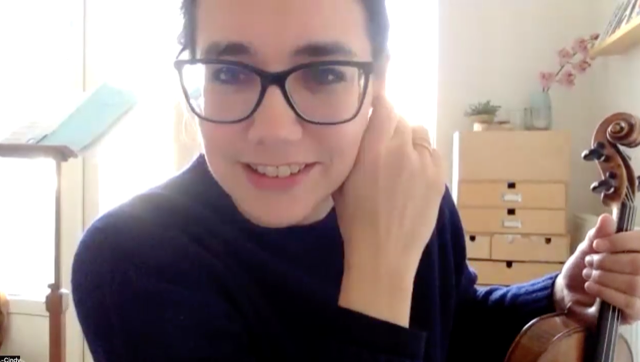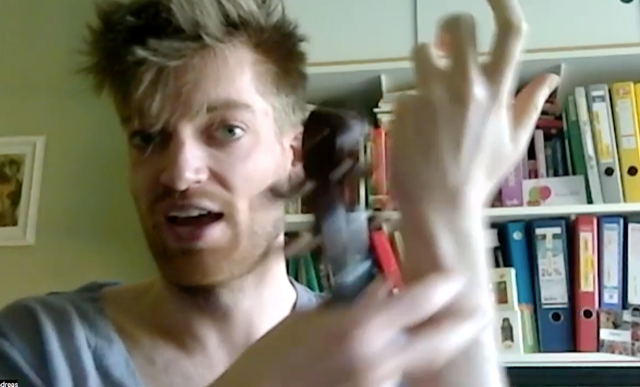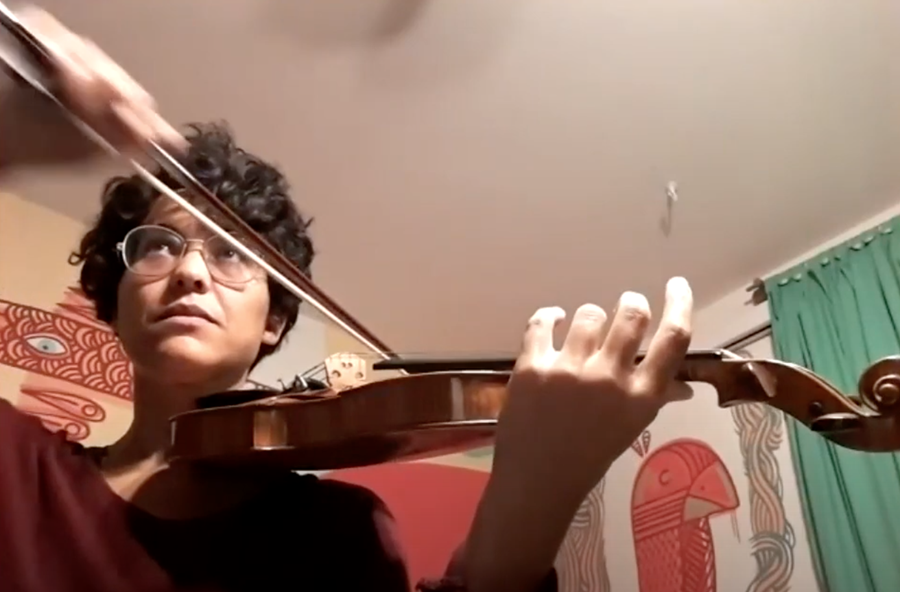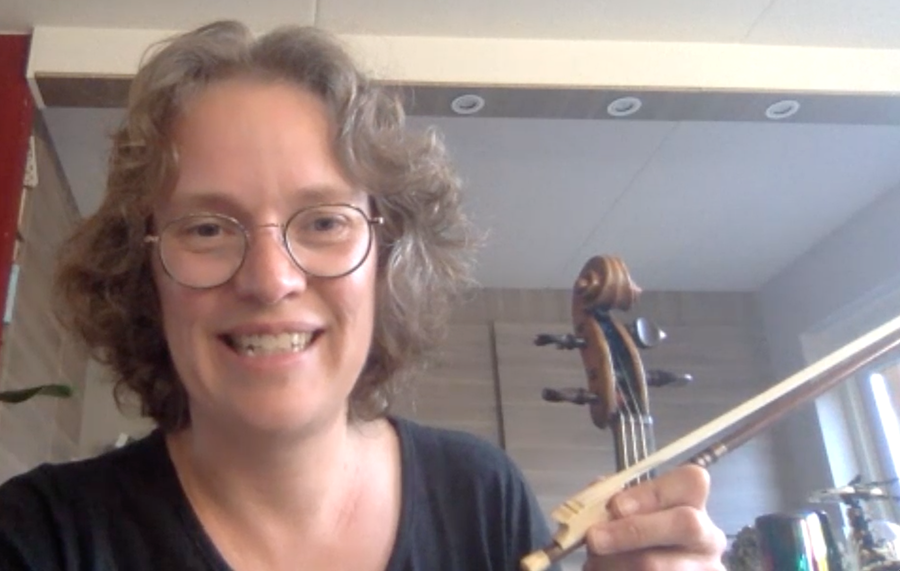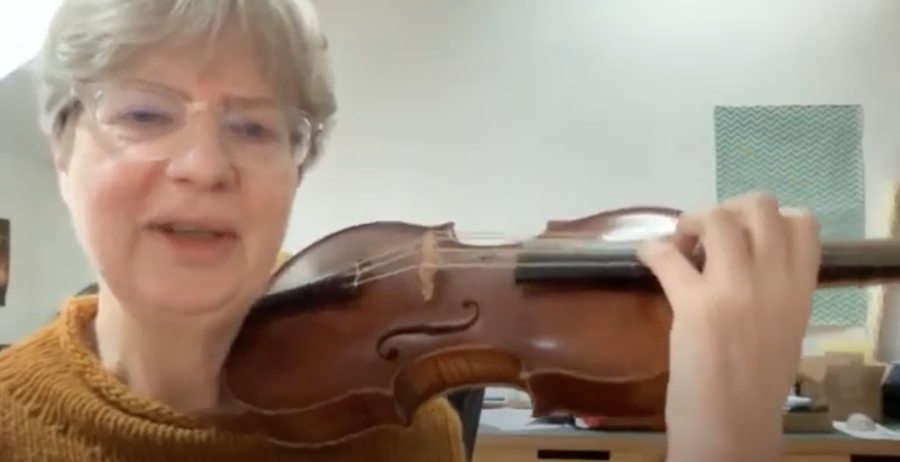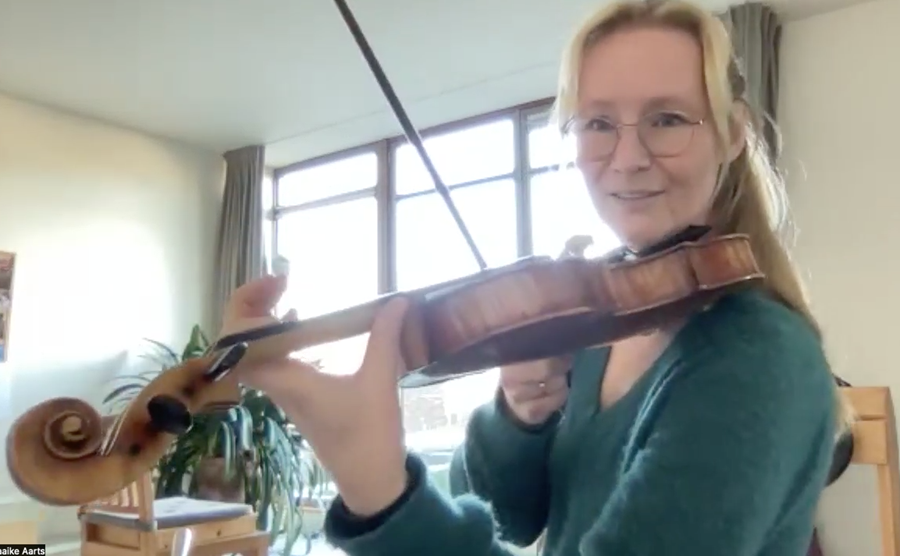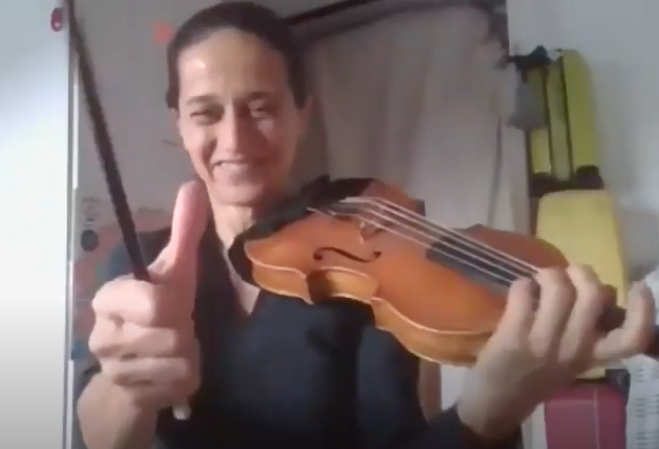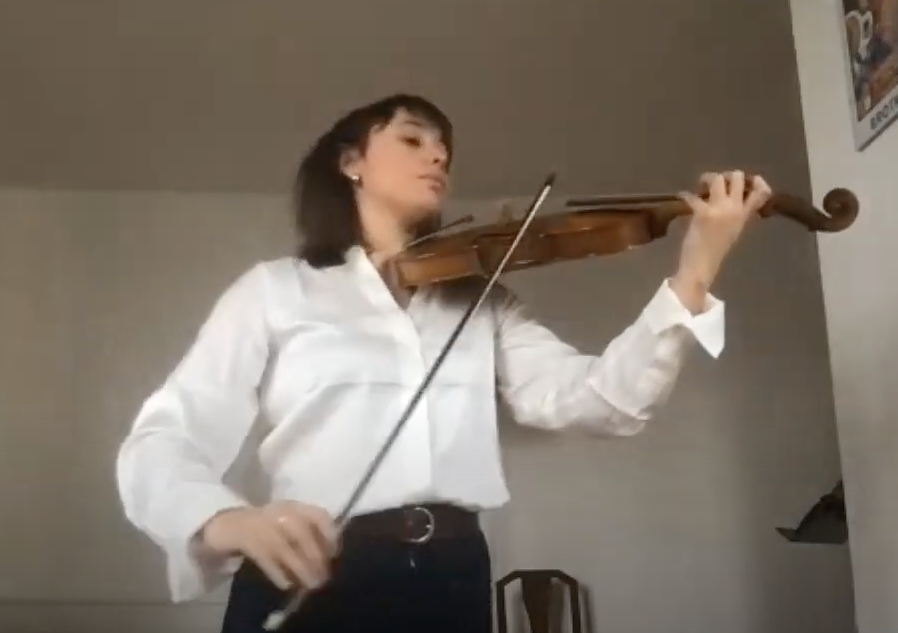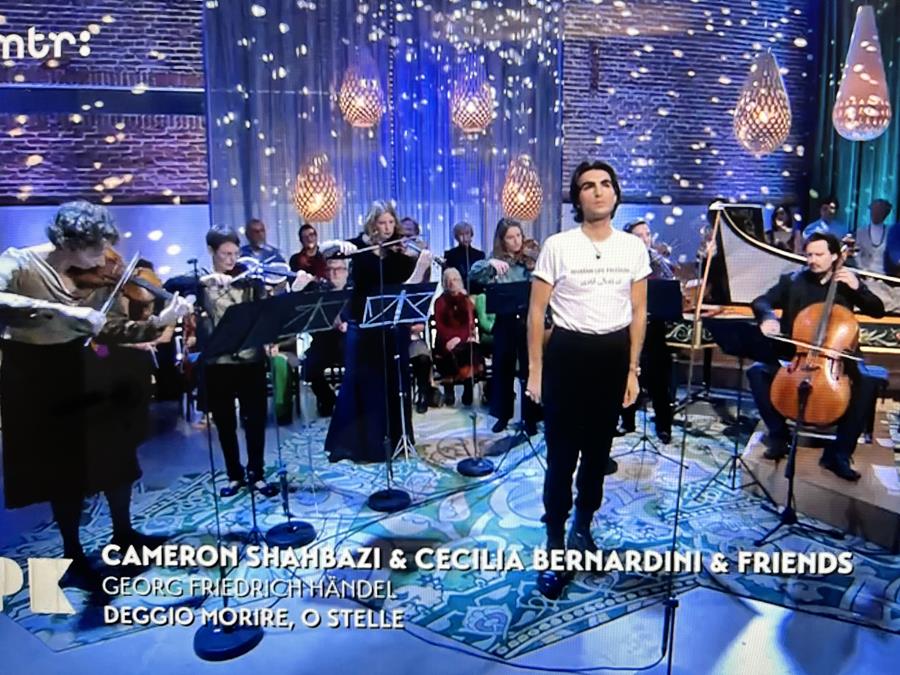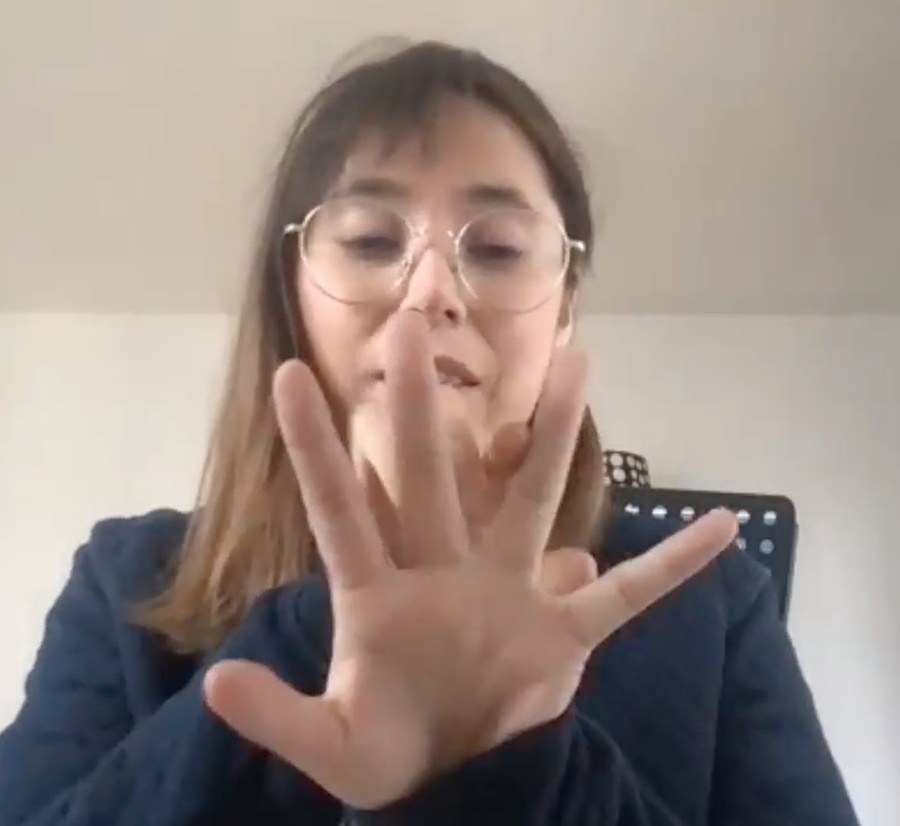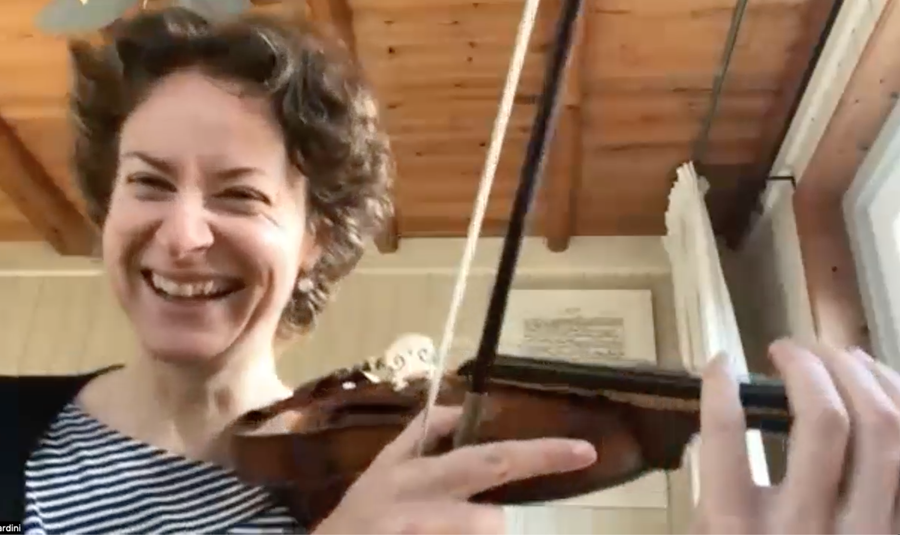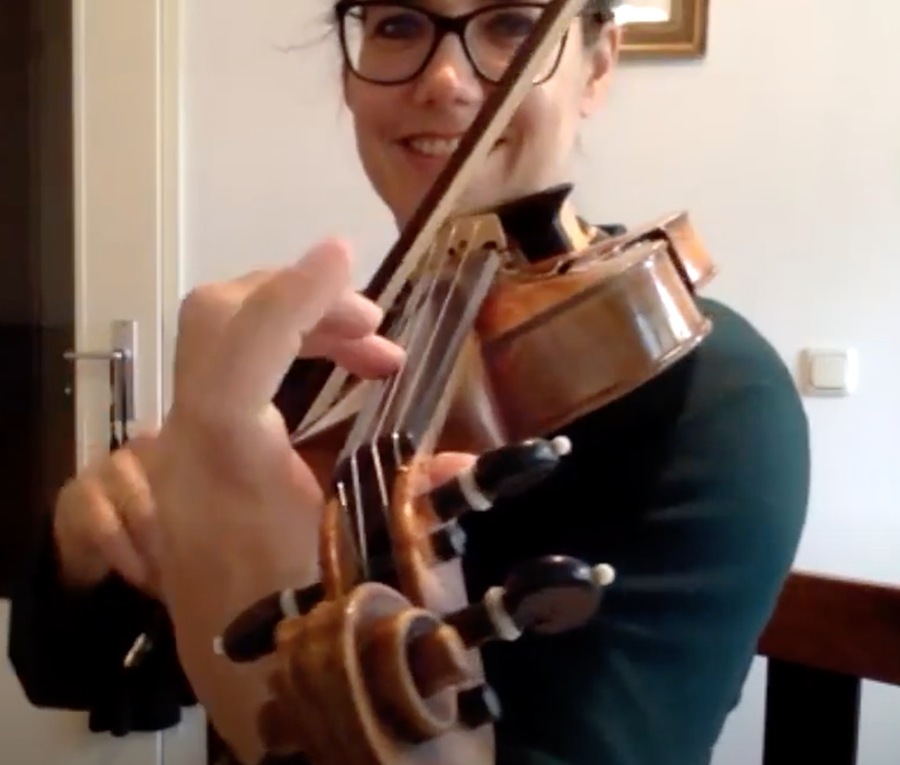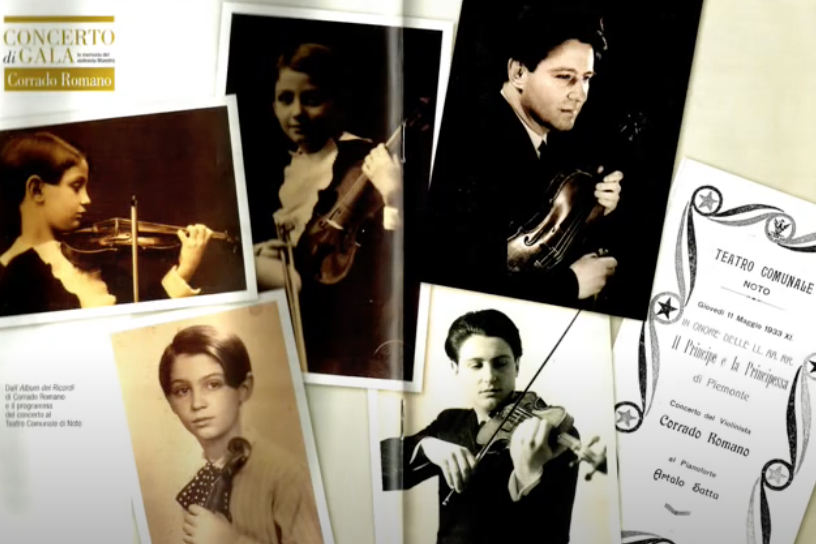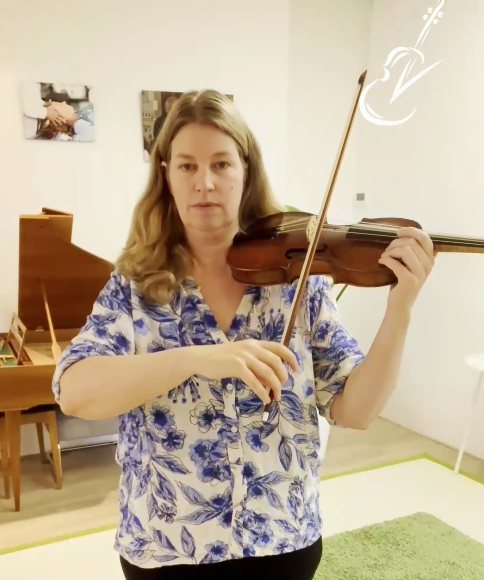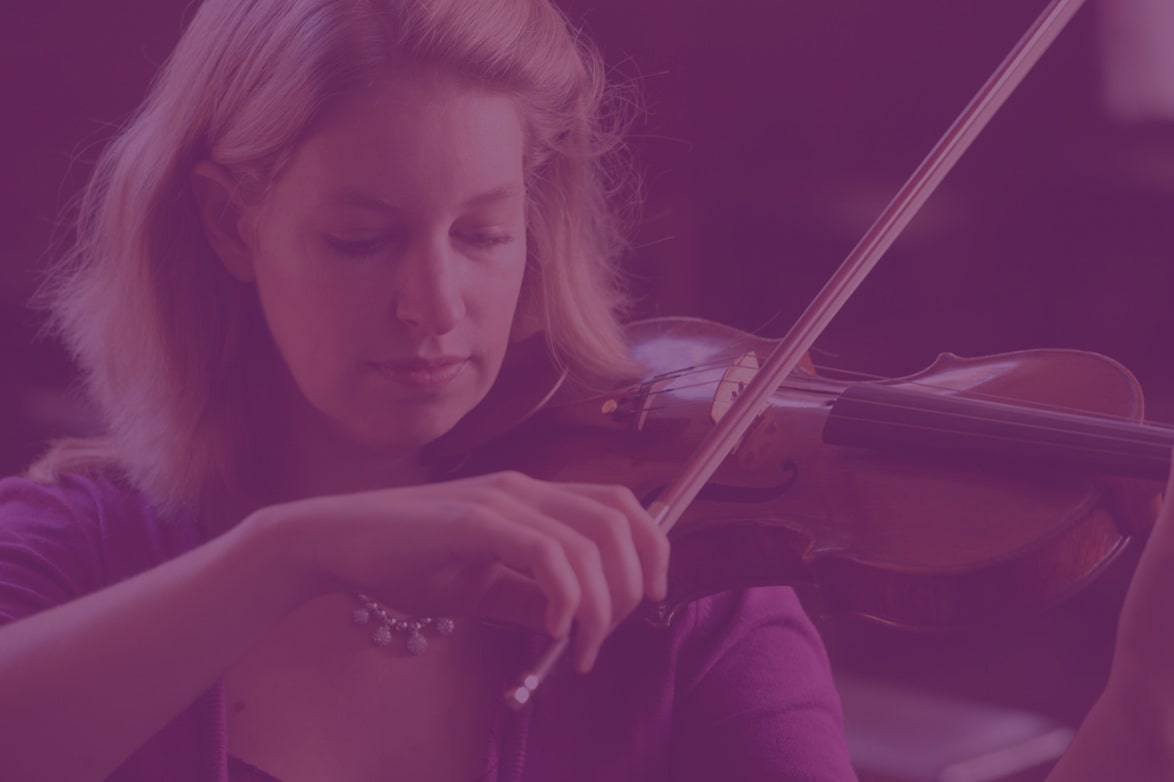
The 18th week of my experiment
Hi everyone,
This is the 18th week of the experiment on playing without a shoulder rest and / or chin rest. Here are some updates and some feedback.
Thank you for sending me your videos, it’s really important for my research. Some people just finished the whole 12 week program, sent their last video and filled out the exit survey. Fantastic, thank you so much! The majority however is still about half way in the program and that is perfectly fine, please do take all time you need and don’t hurry.
It is still possible to start taking part in the experiment. Many people already filled out the entrance survey. Thanks. If you didn’t do it yet, please do so before you start the lessons.
If you know more people who like to join, for example starting this or next month, this is still possible through my website. If you missed the newsletter last week, you can still read it here. There is a collection of past newsletters at my website available too.
Please be welcome to join the Zoom session next Wednesday 11.00 AM (Dutch time) if you want… Just to meet or to ask some questions. Would be nice to meet up. You can watch Zoom sessions back on the login page where the video lessons are, as well.
“I think your research is very important and I think you are very right on all the points you raised. I am so thankful that your talk about this, because almost every musician has unhelpful habits.”
– Jun Keller, Vienna Philharmonic Orchestra,
participant in the experiment
18th Zoom session
Last Wednesday we had a 18th zoom session with some participants of this experiment. It was lovely. If you want to watch it: I recorded the session and there is a link to it in the login page under the video lessons.
James from Australia (living in France) and Ingrid from The Netherlands joined me this time.
James Jennings is an Australian violinist currently on tour in The Netherlands with the orchestra ‘Le Concert d’Astrée’, playing the opera Giulio Cesare. He also was planning to come for a lesson two days later at my practice in Haarlem, but we used the zoom session to already get to know each other and to hear his background and questions. We had a very nice live meeting last Friday.
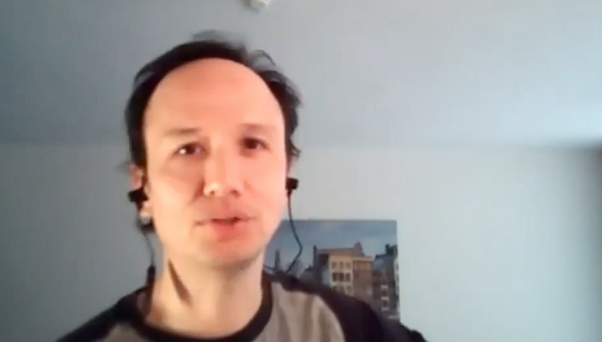
James came to The Hague to study baroque violin with Ryo Terakado and was immediately placed in an orchestra project playing Beethoven (!). He started his lessons in Perth, where the teacher had a collection of period instruments and many of his students ended up going to The Netherlands to study Baroque. This teacher also did not see the need to use a shoulder rest and he was into Baroque music. However, he did not explain anything about how to balance the violin. When he arrived in The Hague Ryo also did not really explain him how to balance the violin, he expected more or less that he would imitate him. James had a lot of questions, but after a year of teaching Ryo said “You see, it’s very good all your questions, but actually you have to do what I am doing first.”.
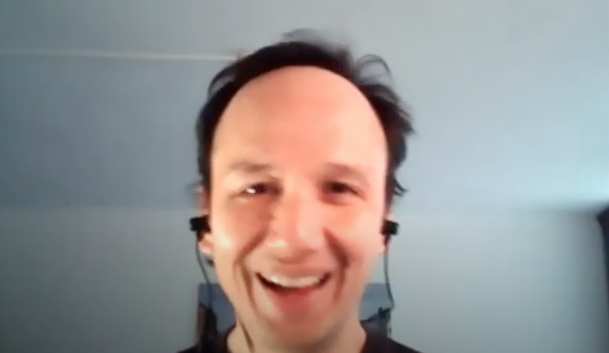
However, sometimes Ryo told him to open up his body in stead of closing while playing. Someone else suggested him to play laying down on the ground, which also helped a lot. He also had a few lessons with Elizabeth Wallfisch who stressed that it is important to feel free, also in the legs, while playing. So when he was put in the Beethoven project in his first year of study in The Hague, the only think Ryo told him was ‘You can sometimes put your chin on the violin while playing this music’. So James just took his modern violin and put gut strings on it and solved it in that way. In hindsight James would have liked to learn more about different options in holding the violin in such repertoire.
When James started to play Romantic repertoire on period instruments, he saw that a lot of colleagues just put gut strings on the violin and did not really change their way of playing, still using a shoulder rest and so on. He tried to do that as well, but he discovered that he could not really go back to modern playing anymore. So he was looking for all sort of solutions, for example putting a scarf under his violin
James already started to study our lessons in the experiment and started thinking about his thumb, which is already helping him in playing the Handel opera.

James has three things he would like to work on with me:
- He experiences tension in his trapezius muscles when playing later repertoire, especially the left side, when using the modern violin. He thinks it has something to do with holding the violin and bowing too. He likes to free that up.
- He is interested in exploring different ways to play Romantic music. He read my article about vibrato and liked it a lot.
- Developing another way of making vibrato, not using the arm anymore. At this moment even in Baroque repertoire he is using arm vibrato. The combination of holding the violin with the head and using arm vibrato gives a lot of tension.
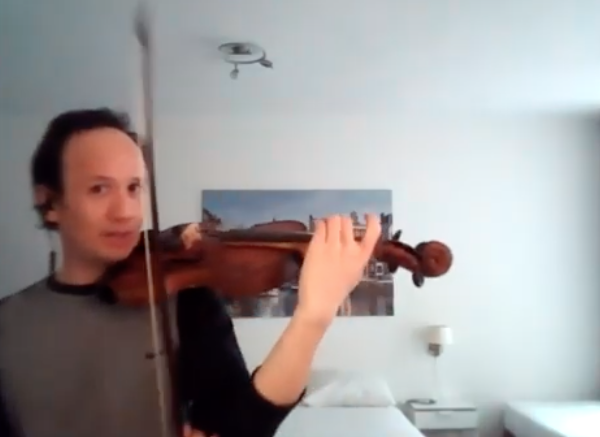

We agreed to work on that when he would come to my practice on Friday. I also told him that I notice that his wrist os going outwards habit, which is creating tension. I would like to work on that with him.
We discussed the different styles we see in people who play Baroque violin and of course it is positive that there is a variety of styles, but the big advantage of playing chin-off, according to James, is that is feels more or less ‘symmetrical’. There are so many people playing in asymmetric ways and having a lot of pain. We agreed that this is a more ‘sustainable’ way of playing. I added that musically one gets nicer results, I think, if the body is used in a healthier way.
In a way it’s bizar that something as basic as supporting your instrument is causing so much trouble and that there is not more research being done in that field. I told James about the workshop I gave to the National Youth Orchestra here in Holland half a year ago, and asked the students to just sit with there violin in playing position on their shoulder for 2 minutes… and almost everyone reported experiencing tension or even pain by doing that for two minutes.

I think for James it’s most interesting to follow our second experiment, playing with a chin rest, but he also could do both programs at the same time.
We then discussed with Ingrid how her experiment is going. It’s interesting, as they come from very different directions but are interested in the same things. Ingrid just started with the vibrato lesson and just wanted to check with me how it is going.

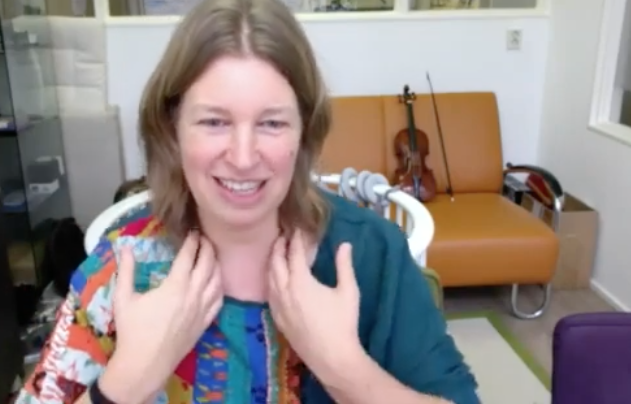
I explained that I think it is really important to develop a way of playing vibrato in which the left hand can move freely on the left lower arm, which is not moving. In other words, to let the wrist be free to move the hand, but without moving the wrist itself forwards or backwards. What I find interesting is that in Chinese medicine they speak about having ‘5 necks’, being the neck, the two wrists and the two ankles. They work together. If someones neck is tensed (for example by holding the instrument), it is very hard for the wrists to lose up towards a nice vibrato.
Then I explained them the exercise we also do in the experiment, with the little piece of paper between the finger and the string, and then moving the paper over th string. In this way you can feel how free the wrist can be while still supporting the instrument with the thumb.Then after a while you take the paper away and keep the finger at the same spot on the string, while moving the hand in the same way like before.
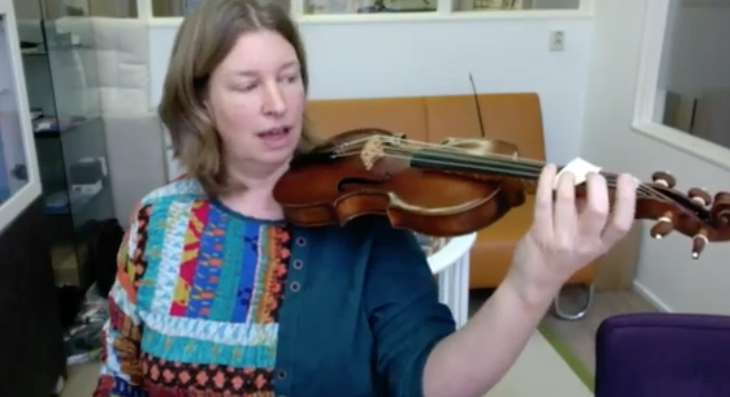
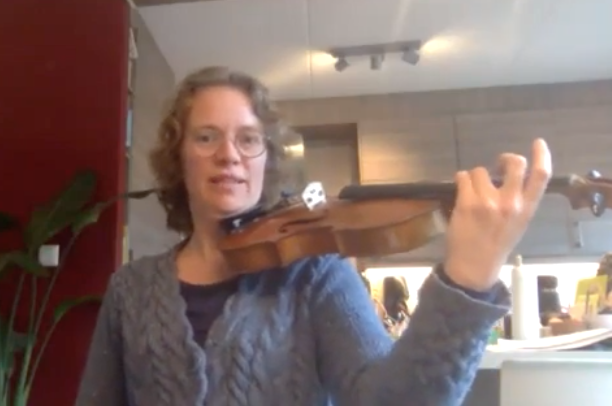
I recommended to them to really start slowly, making the sound like a sirene, like an ambulance.
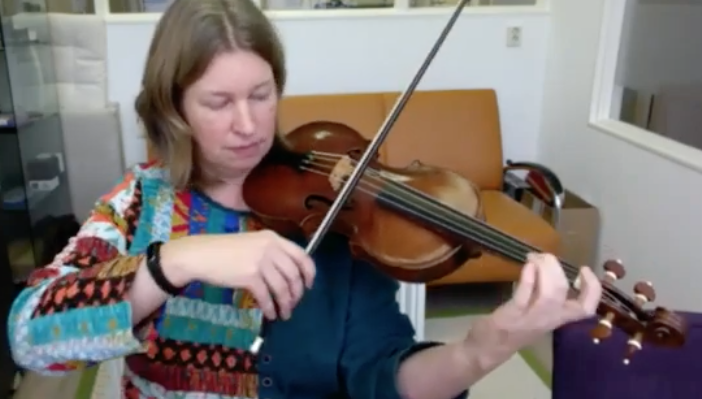
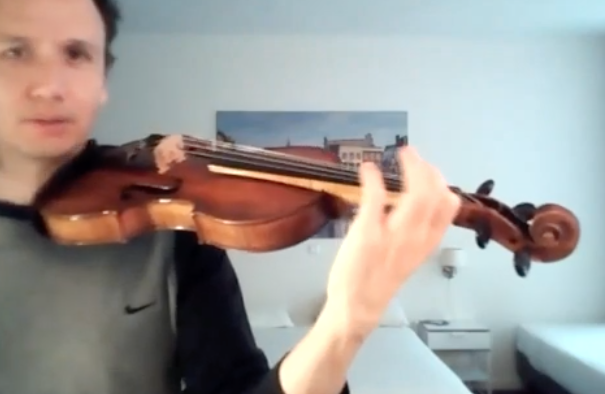
We tried this. For Ingrid it went fine as long as her hand is not sweating :-)… For James we discovered that he changed his thumb too much going up in on the A and E string. When he changed that, the hand was more free to make vibrato.
I stressed that we need to keep thinking a connection between the fingertip and the thumb, als also between the fingertips and your heart (through the violin). This gives much more stable grip on the violin during the vibrato.
We talked about what is the pivot of the see-saw by doing vibrato. James first thought that the thumb is the pivot but in fact I think the fingertip itself is the pivot where the hand is moving around. I think that was one of the secrets of Paganini’s violin technique. While supporting the instrument with your thumb this mechanism is much more clear than while using a shoulder rest.
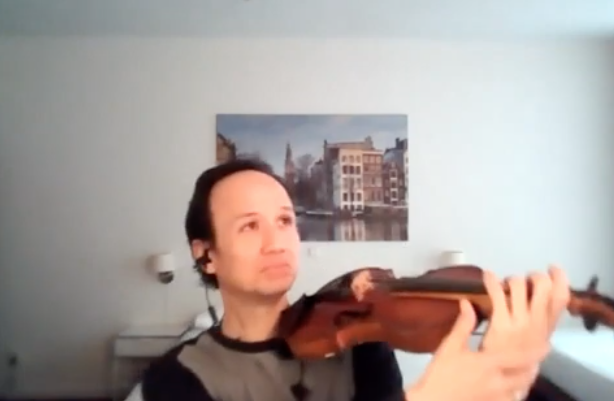
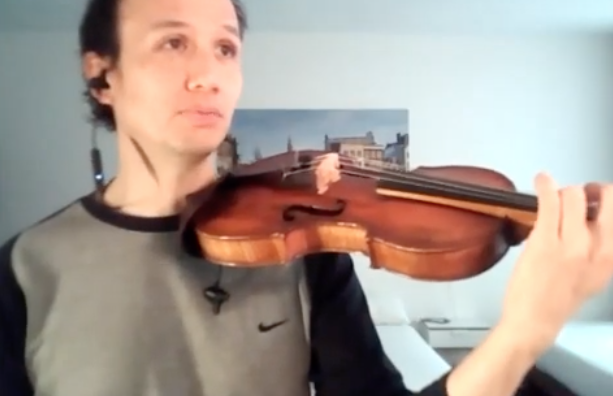
So two things are really important for James: Not to have the wrist pointing outwards and to keep the violin horizontally.
I also asked James how heavy he thought his violin is… like many violinists he never thought about that. I find it so interesting. It’s around 450 grass, and already 200 gram is laying on the collarbone, so all you have to ‘lift’ is around 200 gram, it’s almost nothing! For choosing chin rests I really recommend selecting a light kind of wood, peach for example, in stead of ebony, which is very heavy. For a shoulder rest I would really recommend Berend Korfker rest, as it is the lightest. I am in contact with him.
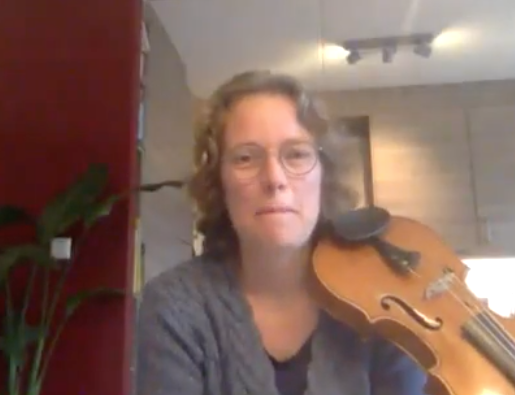
Ingrid is using a Wittner chin rest since a while, which is a very light kind of plastic, that also has the advantage of being very light and placed in the middle.
We talked about it that placing the chin back on the violin while making position shift backwards is a new think for the timing. We need to develop it slowly and it will be a new habit. Ingrid told us that she already feels more free when she plays in her ‘normal’ way and keeping it more horizontally is much more easy now. If you just keep your violin ‘higher’ it does not work, it has all to do with the support of the left hand and it will go by itself. Not like in some yoga lessons, where they say ‘bring your chest up’, fo example.
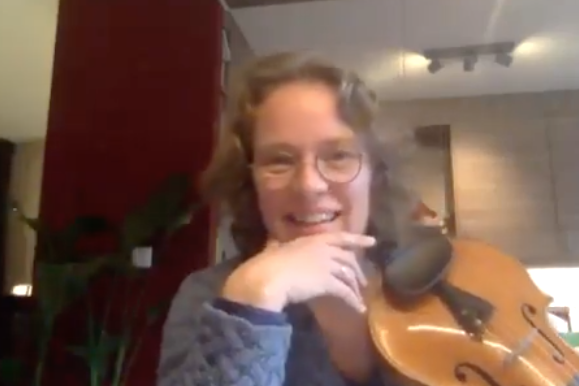
James shared that he also thinks the way he is sitting is giving the stress in his trapezius muscles. I completely agree and we worked on that last Friday, how to sit on the sitting bones and balance the head on the top of the spine. We had a very nice meeting together.
Ingrid shared that she needs to make the connection between finger tips and the thumb more conscious. This can help to keep this technique also when one has sweaty hands. Ingrid also shared that she always starts with lesson 1 again when she is practising and build everything up from the basics of our experiment. That is a nice suggestion to all participants, thanks!
Please take your time
It is important that everyone in this experiment enjoys the curiosity we have, and take part in a joyful and playful way. In that way, we learn the best. Don’t try too much to ‘do it right’…and don’t hurry. If you need more time, just let me know, keep me informed, and we take a bit longer. No problem!
Best regards, please let me know if you have questions,
Esther Visser
